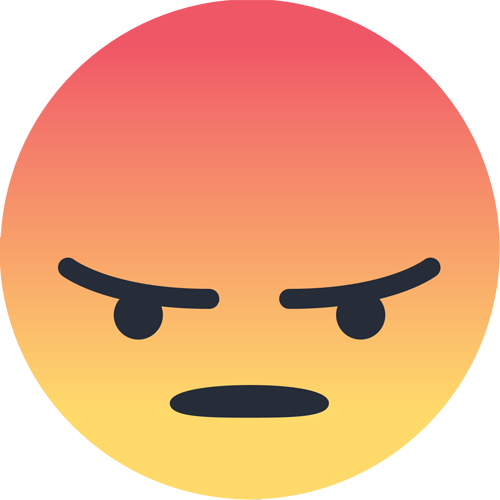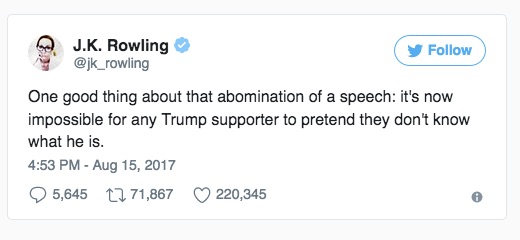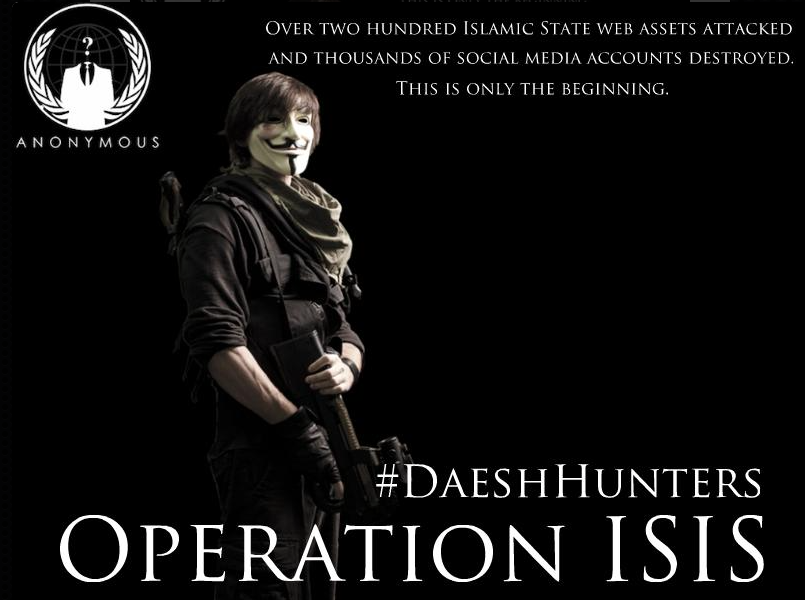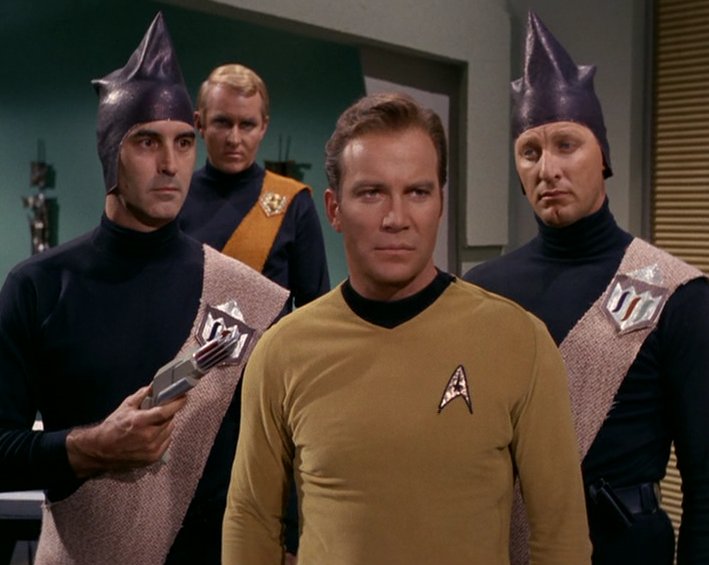On Saturday, August 12, 2017, a white supremacist plowed into a crowd of counter-protestors who were gathered to protest a racist and neo-Nazi march through Charlottesville, Virginia. In response to the attack and violence that accompanied the march, President Trump said that “many sides” were to blame for the violence.
President Trump’s comments were met with widespread criticism on social media, as he appeared to equate the actions of neo-Nazis with anti-racist demonstrators. For instance author JK Rowling tweeted out that:
which was retweeted more than 70,000 times.
One of the most salient post-Charlottesville critiques is that the US has never fully grappled with its legacy of racism and slavery. Social media itself media has also been thrust into the spotlight, with some arguing that it engenders hate speech and empowers the most extreme voices. In essence social media has “poisoned” political discourse.
It seems somewhat quaint to think about it, but 8 years ago when the first digitally connected protests broke out in Iran, and later in the Arab Spring, there was unbridled optimism about the role of social media for positive political change and democratic empowerment. People talked about social media as tools for digital democracy, and even called it a “liberation technology.” Critics of this were swift to pounce, and pointed out that social media also affords autocrats and governments with new tools to crack down on protestors and dissidents, and spread misinformation. Furthermore, groups of white supremacists and ISIS have used social media to recruit followers and plan attacks. At the same time leaders have increasingly turned to social media as a unique tool to shape politics and communicate, with over 90% of world leaders currently on social media.
All of this raises an important question: how is social media changing political conflict, and how should scholars and policymakers analyze its effects on conflict and contentious politics? In a recent article, I summarize the current state of research, and provide a blueprint for understanding communication technology advances and conflict via four points below.
1) Lowered Barriers of Communication
First, social media upends the top-down communication model. Its not simply governments that can put out slick propaganda. Insurgent political candidates, and actual insurgents can use social media to amplify their message and recruit followers. Yet this does not mean that social media replaces traditional media. Rather, it allows actors, and in particular challengers to the incumbent regime, to get their messages out, and seed it to traditional media sources, thereby amplifying their reach. For instance, during Syria’s Civil War insurgent and rebel groups, including ISIS, have made use of propaganda to spread their brands. In fact, many have actively used media coverage to further fundraise on Facebook and Twitter.
2) Increased Speed of Communication
Since information tweeted, blogged, or Periscoped out can be instantly streamed across the globe, the advent of social media creates incentives to be first, particular for media organizations. This allows actors to create false or misleading stories, to shape the news cycle. Conversely, atrocities or other mass-killings can be documented more easily and draw the world’s attention.
3) Strategic Dynamics and Adaptation
It is important to avoid making sweeping generalizations about whether challengers/protestors or incumbents/leaders are more empowered by social media. Rather what is more important is the strategic interaction and constant adaptation of both sides to shifts in communication technology and tactics. For instance the Chinese government has used thousands of paid micro-bloggers (part of the so-called “50-cent army”) to drown out controversial trending stories. Furthermore, other groups, from dissident activists to ISIS supporters, have responded to government and corporate monitoring of traditional outlets, and migrated to encrypted apps such as WhatsApp and Telegram.
4) New Data and Information
Social media generates new data and information. This provides new opportunities for scholars and researchers to understand new phenomenon such as leader communication and behavior, crisis communication, and popular protest dynamics. Yet this new data does not exist in a vacuum. Governments and leaders are increasingly able to monitor social media and quickly gauge support for themselves or policies. For instance, during the 2012 Gaza conflict the Israeli military actively monitored their support on Twitter via the mentions of the hashtag #GazaUnderAttack compared to #IsraelUnderFire. The Five Star Movement political party in Italy has allowed its supporters to express support and vote on different issues directly on the movement’s website. Thus new data that social media and communication technology generate, allow for new insights from scholars, but also change the calculus of the political actors themselves. This new data is likely to be ever more important to political groups, as better data provides a greater advantage for machine learning algorithms.
In sum, the increasing pace of communication and technological change belies simplistic explanations.
Going forward, rather than focusing solely on the technology itself, scholars and policymakers should remember that contentious politics is defined by strategic interaction. This is especially true as the technology behind communication, i.e., machine learning and artificial intelligence, is getting even smarter.







1 comment
Excellent analysis and insight.